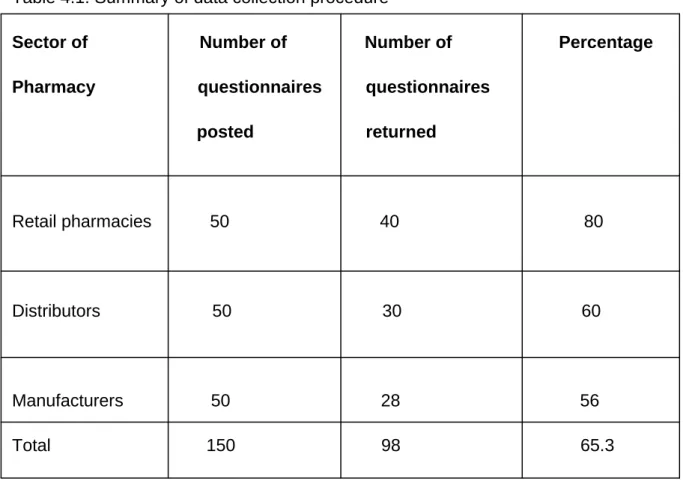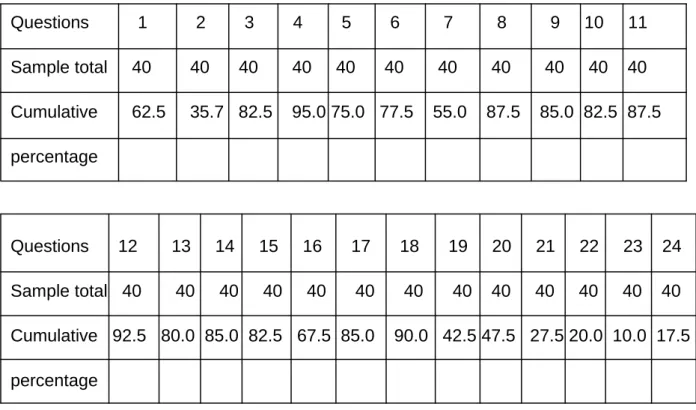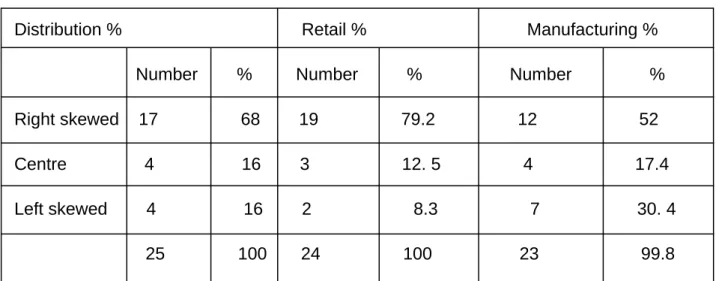The main objective of this study is to evaluate whether supply chain trends bring any effectiveness and efficiency to supply chain management in South African pharmaceutical companies. The study will also propose an integrated framework that can facilitate and sustain supply chain management in South African pharmaceutical companies. The empirical results obtained support the elements of supply chain management indicated from the literature review.
They also proved that supply chain management practices improve customer service levels and company performance levels.
INTRODUCTION
All participants in supply chain management are required to consider shorter cycle times as a competitive advantage. The pharmaceutical supply chain is usually described as a manufacturer-driven chain despite the specific consumer demand characteristics, especially in the private segment of the healthcare market. This description reflects the significant market presence and influence of the large multinational drug manufacturers in the healthcare market.
The main purpose of a pharmaceutical industry is to develop research and distribute medicines in order to provide health care to the people in society (Economy Watch, 2010:1).
PROBLEM STATEMENT
RESEARCH OBJECTIVES
Primary objective
Secondary objectives
SCOPE OF STUDY
Field of study
Industry demarcation
Geographical demarcation
DEFINITIONS OF KEY CONCEPTS AND TERMS
Supply chain management
Logistics
RESEARCH METHODOLOGY
Literature Review
The literature review focused on the theory of previous research done and provided a background to the study being proposed. Necessary information regarding supply chain management and supply chain trends was gathered during the literature review. Identifying the key forces changing the way pharmaceutical drugs are purchased, distributed and sold throughout the supply chain;
Supply chain challenges facing healthcare departments, particularly the pharmaceutical industry, distributors, retail pharmacies and hospital sectors.
Empirical research
- Research design
- Study population
- Constructing the research instrument
- Data collection
- Data Analysis
The knowledge gained from the literature review helped to state the importance of the problem, develop research questions, helped to obtain information about what is already known about the topic, and built on the platform of existing knowledge. The first group consisted of pharmaceutical manufacturers, the second group consisted of wholesalers or distributors in South Africa, and the third group consisted of South African pharmaceutical retailers or retail pharmacies. The purpose of the study was explained and permission was sought to distribute the questionnaires.
The box and skew plot was used to determine the efficient and effective use of supply chain management by pharmaceutical manufacturers, distributors and retailers.
LIMITATIONS OF THE STUDY
The third set of questionnaires was distributed to each pharmacist in charge of each retail pharmacy following the same procedure after permission was granted. The questionnaire is also economical, has the same questions for all subjects and guarantees anonymity. Judgment is made as to which items or sample should be selected to provide the best information to achieve the purpose of the research.
In quantitative studies for purposive non-probability sampling, the emphasis is on the researcher's judgment to select a sample that is representative of the population, while qualitative researchers are more interested in selecting cases that are rich in information.
PLAN OF THE STUDY
This chapter will describe the design of the empirical study through identification of the problem statement, creation of research design, methods to collect the data, data analysis, tabulation of relevant data and interpretation and discussion of the results. Ideally, the all-encompassing philosophy of SCM embraces each of these functions to produce an overall supply chain strategy that ultimately improves firm performance (Wisner & Tan, 2000: 38). According to Lambert and Cooper (2000:81), SCM is an important area that helps to maximize competitiveness and profitability for the business as well as other supply chain members who integrate and coordinate across their extended network.
They further explained that supply chain management has become a way to improve competitiveness by reducing uncertainty and improving customer service.
CHARACTERISTICS OF SUPPLY CHAIN MANAGEMENT
According to Baltzan and Phillips, the following key factors are essential for the successful implementation of supply chain management: inventory management, cost, information, customer service and relationships. Cost: Cost as explained by Baltzan and Phillips refers to the amount needed to manage the supply chain. The important objective of supply chain management is cost reduction especially at the end of the supply chain.
To maximize the potential of supply chain management, information must be in two directed flows (Baltzan & Phillips.
BASIC SUPPLY CHAIN MANAGEMENT COMPONENTS
Not at all How often are the methodologies of supply chain implemented for the optimization of the business.
THEORIES AND FRAMEWORKS REGARDING SUPPLY
Theoretical foundations of SCM
SCM –The Principal Agent Theory (PAT)
SCM- Transaction Cost Analysis (TCA)
SCM –The Network Perspective (NT)
SCM-The Resource –Based View (RBV)
FRAMEWORKS OF SUPPLY CHAIN MANAGEMENT
KEY DIMENSIONS OF SUPPLY CHAIN MANAGEMENT
From a comprehensive analysis of various SCM practices, three important dimensions of supply chain management were identified. As Carr and Peterson acknowledge, strategic sourcing is a precursor to supply chain management (SCM). The construct of strategic procurement is operationalized according to dimensions such as whether procurement is aligned with the company's strategic direction, whether procurement is carried out taking into account the company's long-term problems and whether suppliers have adequate knowledge of the company's strategic goals (Chen & Paulraj, 2004a:152).
They further stated that strategic purchasing also increases knowledge development that leads to organizational development and improvement of interaction between the member components of a supply chain. Concurrent engineering deals with the early involvement of suppliers, customers and buyers in the product/service design phase (Celtek & Kaynak, 1999). From a supply chain perspective, the involvement of various components in the supply chain is highly emphasized. The critical element of concurrent engineering practice is the simultaneous inclusion of all phases of the related divisions (Jarvis, 1999:89).
This essentially means that during the product design phase, customers who are part of cross-functional teams can voice their opinions along with other functional area members such as marketing, manufacturing, and finance. According to (Griffith, Harvey & Lusch and 2006:92), organizations engaged in SCM should continuously monitor the dimension of long-term supply chain relationships. Some of the key benefits of maintaining long-term relationships include sharing important information with the partners involved and sharing a certain level of trust and improvements in knowledge management and overall business-level benefits.
PRINCIPLES OF SUPPLY CHAIN MANAGEMENT
Adopt lean philosophies: During the past two decades, operationally excellent companies have focused on creating lean organizations. As a result, these companies shortened internal lead times and made them more predictable and repeatable, reduced work-in-process inventory from months of inventory to days, implemented just-in-time delivery strategies for their most expensive component materials, and worked to dramatically reduce set-up times. Create a supply chain information structure: An effective information infrastructure, both intra- and inter-organizational, is necessary for a supply chain to achieve competitive advantage.
Today, B2B collaboration over the Internet makes it much easier for supply chain partners to share timely demand information, inventory status, day-to-day capacity utilization requirements, and evolving marketing. These processes, coupled with the information infrastructure, support the efficient flow of materials through the supply chain. Integrate Business Processes: Business processes should be set up both intra- and inter-organizationally to support reorder point management throughout the supply chain.
Their goal is to generate plans that simultaneously consider all elements of the supply chain.
CONCLUSION
IMPORTANCE OF SUPPLY CHAIN MANAGEMENT TO THE
- Changes of pharmaceutical distribution
- Structural changes
- Major factors of future growth
- Protection of patents
- Outsourcing
- Global manufacturing
- Increased competition
- Technological developments
EFFECT OF RECENT TRENDS ON MEDICATION
- Partnership issues
- Outsourcing
- Third party logistics
- Global issues
- Technological developments
SAMPLING
RESEARCH DESIGN
DATA COLLECTION
DATA ANALYSIS
- Quantitative analysis of the results of the questionnaires
FINDINGS
SUMMARY OF FINDINGS
CONCLUSIONS
The three groups do display characteristics of VKB such as inventory management, cost savings, information flows, customer service and relationships, except for the retail pharmaceutical businesses in which constant flow of information, especially with their distributors, does not occur as often. It may be that retail pharmaceutical businesses feel that they are not important members of SCM. Results obtained from the findings also indicated that all the three groups form close partnership to improve customer service.
This is because all the groups are highly interdependent on each other for effective and efficient supply of medicines to the patients. Respondents from the three groups also responded to demands for lower costs, which is a goal of SCM. The results also reveal that members from the three groups of supply chains have strategies to improve customer service, although there may be challenges that they encounter when improving customer service.
Supply chain members from all three groups have a plan for managing all resources to meet customer demand in terms of supplying products or providing excellent services. Findings from pharmaceutical manufacturers indicated that they have a high level of trust and cooperation with suppliers that may include strategic supplier selection. All three groups indicated that they create a collaborative partnership with their supplier, which is necessary to increase value and service to customers.
Respondents from the three groups believe that current trends, such as the use of technology, help to increase value, improve the service offered and the quality of life of end users. In conclusion, based on the findings from the empirical study, the three groups showed the characteristics of SCM, the basic components of SCM and also showed the implementation of SCM processes such as demand management, CRM and others.
RECOMMENDATIONS
The theoretical foundation of supply chain management: a functionalist theory of marketing”, International Journal of Physical Distribution &. Very little 4. Very little 3. Somewhat 2. Very little 1. Not at all Does the business have planning and control strategies to optimize supply chain management. The following questions identify important best practices in the pharmaceutical supply chain How often does the business recognize the importance of supply chain management and practices.
Usually 4. Often 3. Sometimes 2. Rarely 1. Never Are the principles of supply chain management visible in daily practice. Usually 4.Often 3.Sometimes 2.Rarely 1.Never How often are supply chain methodologies implemented for business optimization. Very little 1.Not at all Is there a constant flow of information and materials between members of the supply chain.




